Información general
1. Escribe la palabra que desees buscar en la caja situada en la parte central y haz clic en Buscar.
2. Se abrirá una ventana que te permitirá seleccionar la palabra en una lengua determinada.
3. Una vez elegida la palabra, tendrás acceso al grafo en forma de árbol, donde aparecerá dicha palabra destacada en negrita y se mostrarán los descendientes directos en su misma lengua (palabras derivadas y compuestas) y sus antecedentes directos en otra lengua. Junto a cada palabra está situada una figura: un cÃrculo, un cuadrado o un pentágono. Cada figura tiene el color de la lengua a la que corresponde la palabra, ya que las lenguas están diferenciadas con colores. Se puede hacer clic en las figuras que tengan una flecha para desplegar más descendientes.
Los cÃrculos indican que la palabra asociada solo dispone de una base en su propia lengua. Se puede hacer clic en las palabras con cuadrado o pentágono.
Los pentágonos indican que la palabra asociada tiene tanto una base en su propia lengua como un antecedente en otra lengua (un origen). Al pasar el ratón por encima de la palabra, se visualiza la mano : al hacer clic, aparecen los enlaces con su base (lÃnea continua) y con su origen (lÃnea discontinua).
Los cuadrados indican que la palabra asociada tiene más de una base en su propia lengua (dos, por regla general). Al hacer clic en la palabra, se despliegan los grafos correspondientes a sus dos bases.
Las ramas dibujadas con lÃneas continuas señalan relaciones derivativas entre palabras de la misma lengua, mientras que las dibujadas con trazos discontinuos reflejan relaciones entre palabras de distintas lenguas.
Al pasar el ratón por encima de la palabra, se abre una ventana pequeña con información especÃfica sobre esa palabra: tipo de unidad, categorÃa gramatical, significado morfológico, tipo de proceso, afijo, etc.
¿Cómo aumentar o disminuir el grafo?
Use la rueda del ratón encima del grafo para aumentar o disminuir su tamaño.
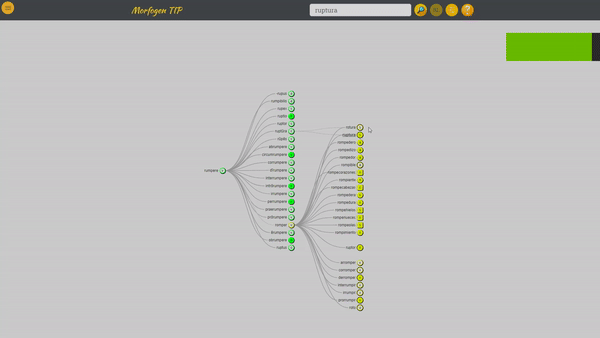
¿Cómo mover el grafo?
Mantenga el botón del ratón presionado para mover el grafo.
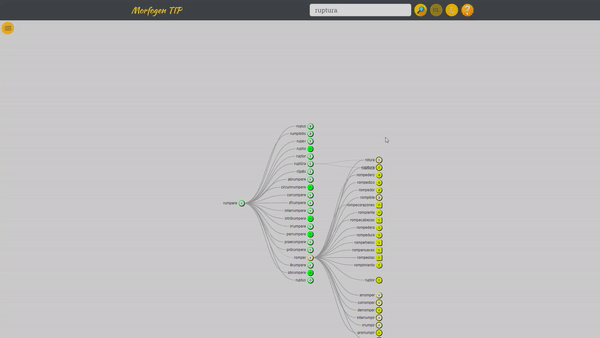
¿Cómo desplegar los descendientes de un término?
Haga clic en las figuras con una flecha para mostrar u ocultar sus descendientes o sus derivados.
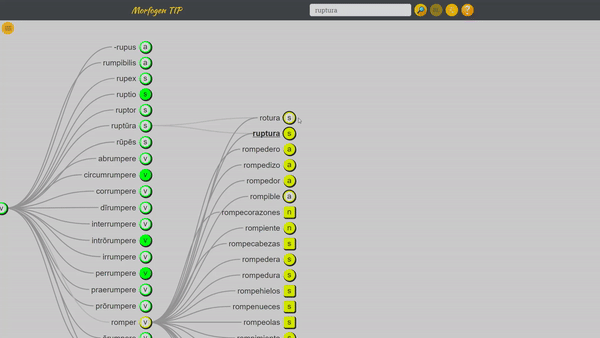
¿Cómo mostrar los términos tras filtrarlos por lengua?
Haga clic en las palabras con cÃrculos con borde gris para mostrar todos sus derivados.

¿Cómo ver más información sobre un término?
Posicione el ratón encima de las palabras para mostrar información adicional.
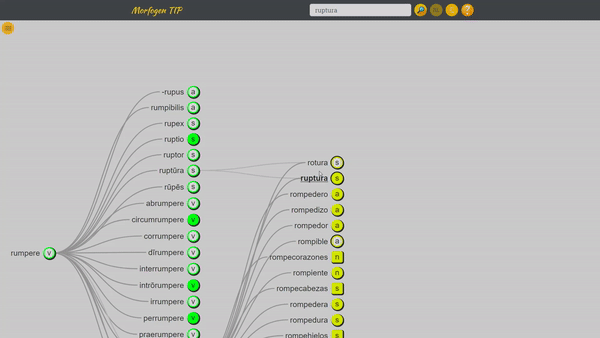
¿Cómo filtrar elementos del grafo?
Use los filtros del botón opciones para seleccionar los nodos que desea visualizar en el grafo.
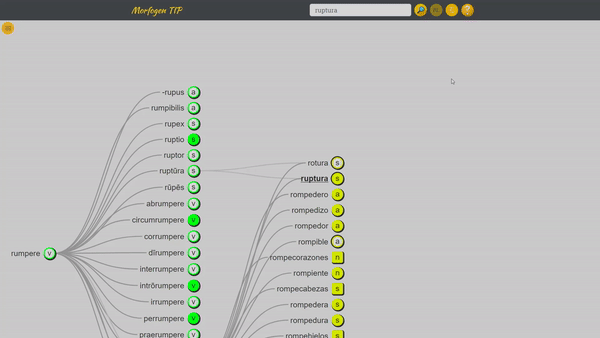
En caso de citar este recurso, por favor use la siguiente referencia:
Pena, Jesús (dir.): BDME TIP. Plataforma web para el estudio morfogenético del léxico. Disponible en https://bdme.iatext.es versión 3.0 ISSN 2660-7190